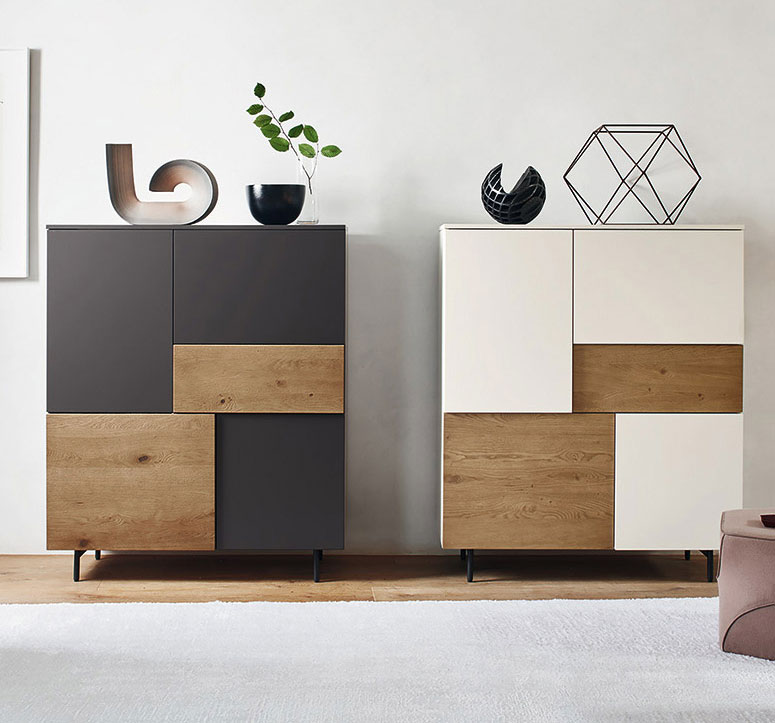How to Furnish your House: Sideboards and Cupboards
Sideboards and cupboards are living room storage units inside which it is possible to put dishes, glasses, tableware, cups, table clothes and accessories. If necessary it is also possible to use them as pantries.
We are talking about storage solutions useful to organise the living area, sitting room or kitchen, that is why they are usually placed close to a dining table.
In this handbook you will find ideas and suggestions on modern sideboards and cupboards and in specific:
- - differences and a hint of history
- - measurements and models
- - how to match them to a dining table
- - where to put them
- - materials and colours
- - what to put over the cupboard or sideboard
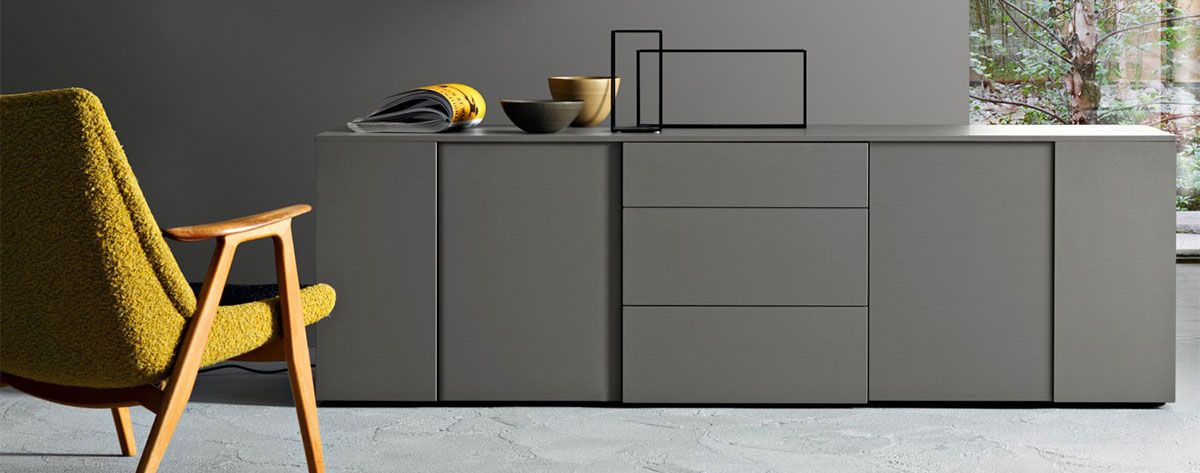
Sideboard or cupboard? Differences and a hint of history
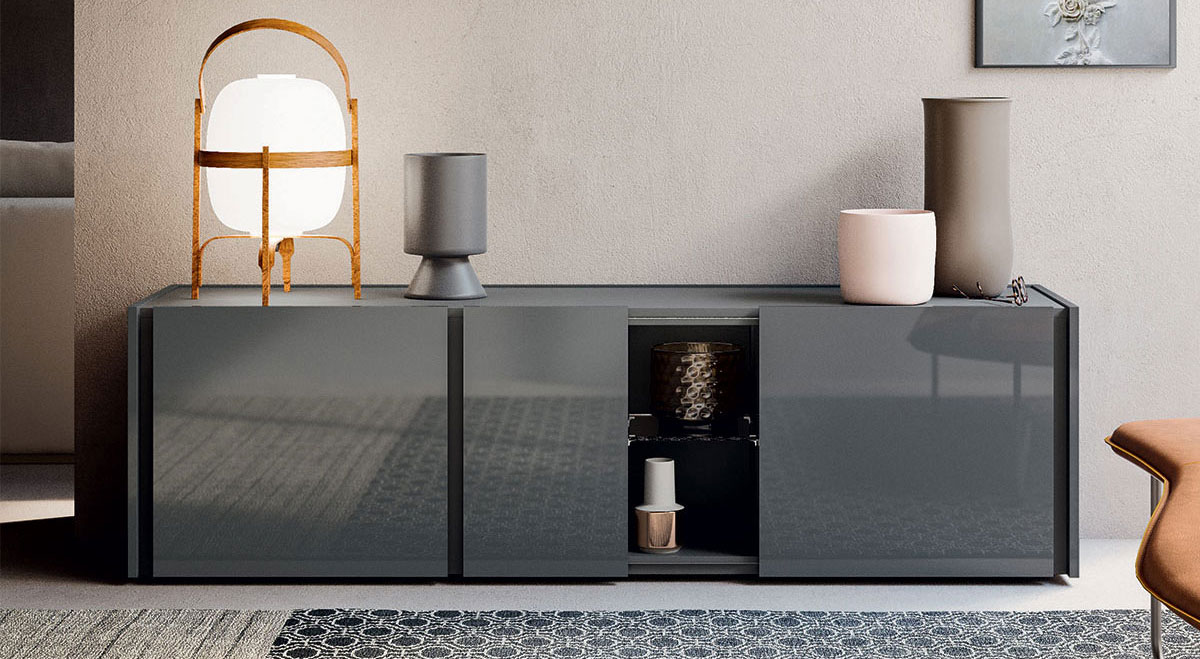
Let's start by defining the difference between these two storage units.
The cupboard is higher and narrower than the sideboard. This difference in proportion is born from the fact that the cupboard was born in the Middle Ages as a board or table for cups, as the name says it, or to display plates, cups and saucers. The first cupboards where open, they had tiers and sometimes also one or more drawers. It is only with time that the cupboard gradually changed its meaning to define a closed piece of furniture.
The sideboard is low, it develops horizontally and is approximately as high as a dining table.
The sideboard, historically, is a furniture piece standing close to the table. As a matter of fact tables at that time where basically just long boards standing on trestles and they were put together and taken apart every meal. The sideboard is simply the evolution of that long board upon which food was served and that stood on the side of the table. With time of course its function developed into a more practical storage cabinet.
But that is not all of it. Many of you will call a sideboard a "buffet cabinet". This term, that nowadays also refers to a type of meal in which food is served in a public area and diners take what they want by themselves, seems to derive from PIerre Buffet, chef of Francis I, king of France. The chef followed the king during Italy campaign, started to use a chest to contain and move food, crockery and bottles. By removing the lid, this chest would turn into a dining table to serve the king.
The new furniture piece became a trend and an element that all the nobility will soon adopt and have reproduced by their carpenters. And that is how a simple chest, became that "buffet" that is today a synonym for sideboard. The flair and inspiration of those carpenters turned a simple travel trunk in a low storage unit with drawers or doors, or in the higher version to display the most precious plates and glasses.
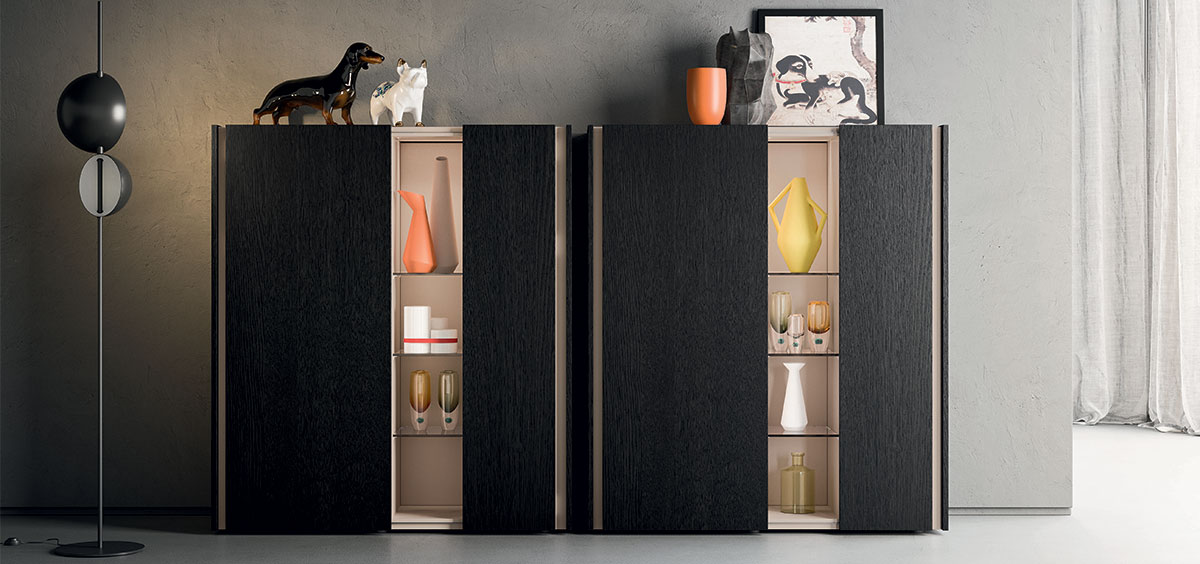
Measurements and Models
A modern or design sideboard comes with a minimum of 2 and a maximum of 4 doors. Each single door measures between 50 and 60 cm, in some cases the total measurements can be bigger according to the design of the furniture and its shape (for example in case of rounded sideboards with curved doors or other aesthetic solutions). If we have to consider standard ranges, the measurements are approximately:
| MODERN SIDEBOARDS APPROXIMATE MEASUREMENTS |
|
| 2-door sideboard | WIDTH around 100 - 120 cm |
| 3-door sideboard | WIDTH around 160 - 210 cm |
| 4-door sideboard | WIDTH around 210 - 260 cm |
| HEIGHT | 50 - 100 cm |
| DEPTH | 45 - 55 cm |
| MODERN CUPBOARDS APPROXIMATE MEASUREMENTS |
|
| 4-door cupboard (2 above and 2 below) | around 90 - 150 cm |
| 3-4 door cupboard (all in one row) | around 170 - 250 cm |
| HEIGHT | around 110 - 160 cm |
| DEPTH | around 45 - 55 cm |
PLEASE REMIND: the height refers only to the furniture measurements, being with or without feet, with plinth or standing directly on the floor. Wall-mounted sideboards and cupboards can be fastened to the wall at the desired height.
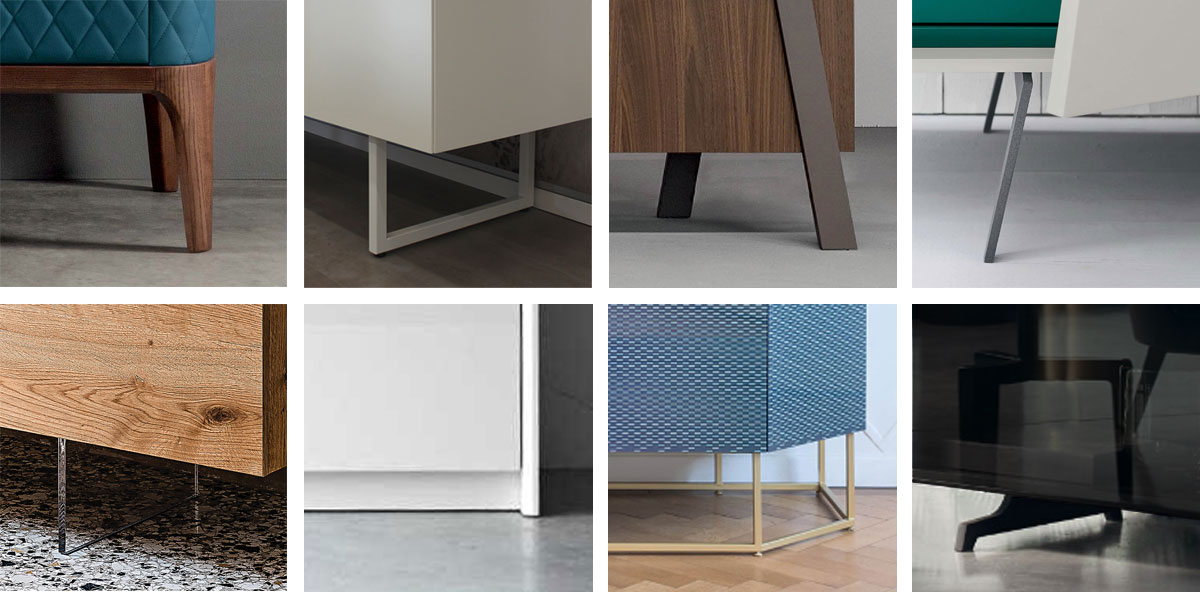
Modern and design sideboards and cupboards are available in different styles. The style is of course a matter of taste, it is subjective and it also depends on the architectural mood of the environment. In order to define the different models in an objective way we can have a look at the different opening systems:
- - hinged doors
- - coplanar sliding doors
- - drop down doors
- - drawers (visible or hidden inside the doors)
- - baskets or big drawers
One of the trend of the latest years combines different opening types together: for example: doors below and drawers above, a mix of drop down doors and baskets, a mix of small and big drawers...
Another characteristic features of sideboards and cupboards are feet. In this case too there are plenty of models to choose from: 4 classic feet placed on the corners of the furniture piece, sled-shaped supports, up to classic "sabre-shaped" feet on shabby chic or baroque sideboards. We then have endless aesthetic solutions on legs: oblique feet, thin metal feet, transparent methacrylate ones, cage-like metal structures up to simple plinths with matching colour.
How to match sideboard and table
The main use of the sideboard is as a complement of the table. So if you want to combine these two elements together make sure there is a proportion between the two..
With a rectangular table measuring 180 - 200 - 240 or 260 cm it's always nice to keep a reasonable proportion in width so, for example, a 220 cm table will look good with a 200 or 240 cm sideboard.
If we were to combine a much smaller sideboard or a much bigger one, the proportions would not work, with the issue of having the sideboard disappear behind a bigger table or on the contrary having the table undermined under the weight of a bulky huge sideboard.
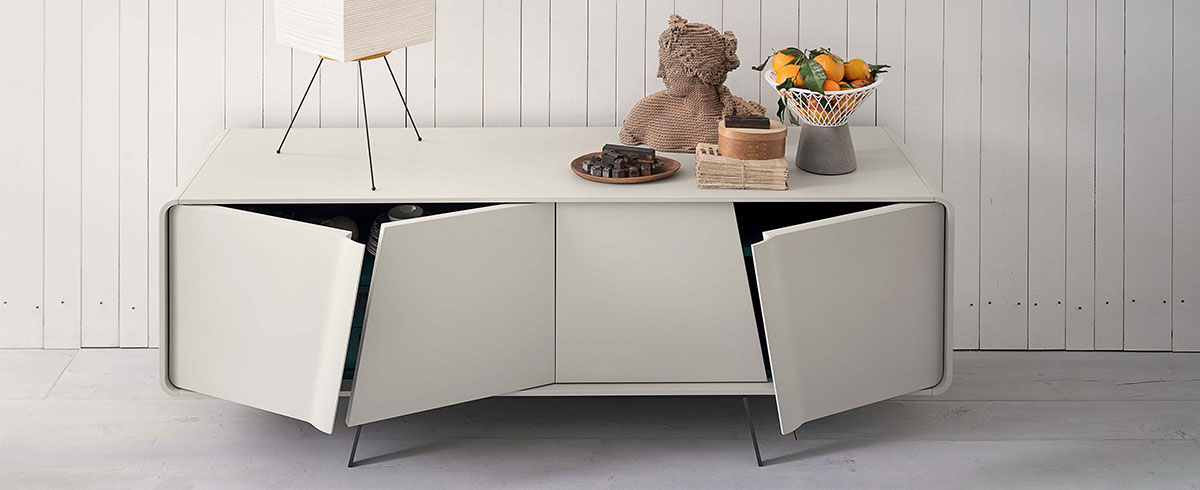
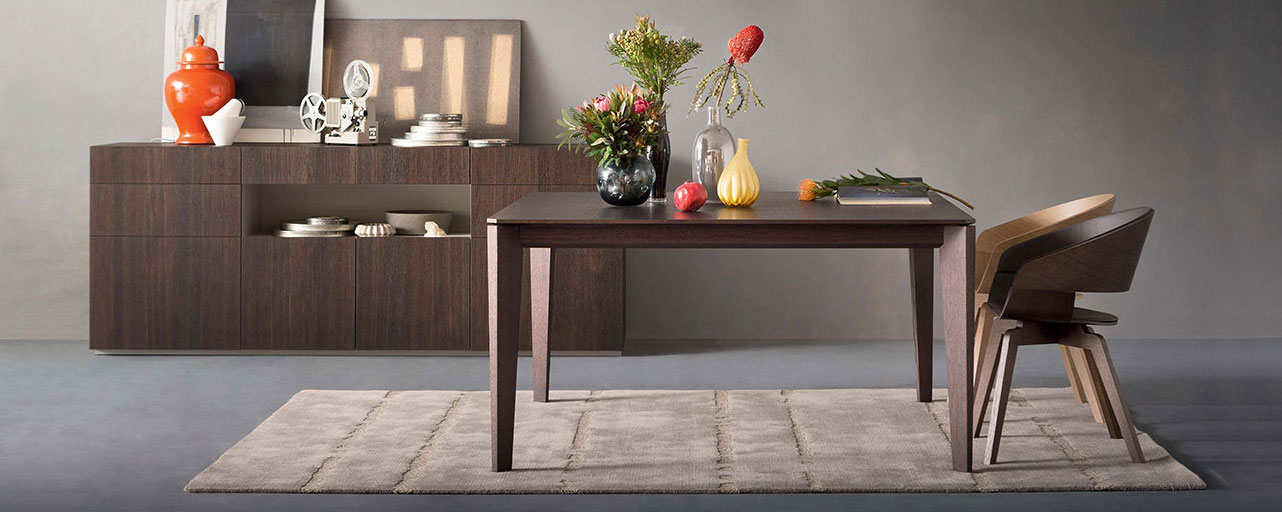
At the same time if we don't have enough space to put the sideboard parallel to the longer side of the table, we can put it on the shorter side, by choosing a smaller 2-door cabinet. In this case we would opt for a cupboard which is narrow but higher granting more storage space inside. Another alternative would be to choose a wall-mounted buffet to make the overall final result lighter.
Where can we place sideboards and cupboards
Up to now we discussed about two standard cases: position on the longer side of the table and position of a small sideboard - or cupboard - on the shorter side of a rectangular table.
These of course are not the only cases to consider. For example if we have a big wide wall we can opt for bigger measurements that can reach 240 - 250 cm in width. At this point the classic approach would be to furnish the wall with a double cupboard. The double cupboard allows to play with volumes and colours by creating a perfect symmetry or at the contrary design more fancy layouts by combining different elements together.


If you're not into the double cupboard, another alternative that works well for all types of space is the modular sideboard.
This solution can be applied to either big or small walls, as it is a customisable solution which also works as a decorative option. We start from single cabinets, the ones we usually use for living room layouts (that can be floor standing or wall mounted) that we can combine together by playing with full and empty spaces, and that we can put directly on the floor, on other elements or fastened to the wall. The great thing about these customisable solutions is that you can come up with your own design and use at best the space you have at disposal.
Another alternative idea is to use a double-sided sideboard. Let's say we have an environment where we can't find a place for our TV set, for example in an open space with kitchen and living area in the same room, with table and sofa that are parallel and an empty space in the middle. In this case the sideboard can work well as a TV cabinet, partition as well as storage unit gathering three functions in one piece.

Materials and colours
There are no fixed rules about colours and materials: we can put a colourful cupboard against an accent tone wall or a neutral-tone cupboard on a neutral wall. However the tendency is usually to match a neutral furniture piece with a coloured accent tone wall and the reason is simple enough: changing the colour of the wall is much easier and definitely more convenient in terms of money than changing a furniture piece!
At any rate before choosing an accent tone you need to consider the size of the wall and of the room: if the wall is very big we recommend to consider well if we want it to be completely coloured (maybe bright red or black or why not apple green?).
A medium-high quality furniture piece has been designed to last for years and years, that is why the selection of the colour is very important: if you have any doubts we always recommend opting for a neutral looking furniture piece and add the touch of colour directly on the walls, as they can be easily changed through the years.
If, on the other hand, you want your sideboard to be a distinctive design furniture piece then you just need to plunge in the sea of colours, original patterns, mirrored doors, carved or decorated fronts.
Another important thing to keep in mind is the choice of materials according to the use and destination of a sideboard and cupboard. For example if we decide to put the sideboard in a kitchen we need to look after a material that is practical, hygienic and easy to clean, so we recommend avoiding porous materials and select laminate finishes, or smooth melamine surfaces, either matt or high gloss, that are very convenient to maintain through time.
In the living and sitting area, wooden sideboards are a must-have. They fit every environment with their discreet elegance and work well also in modern environments, for a more contemporary touch we recommend mixing wooden materials with some coloured door fronts or in white lacquer to get a more neutral style.
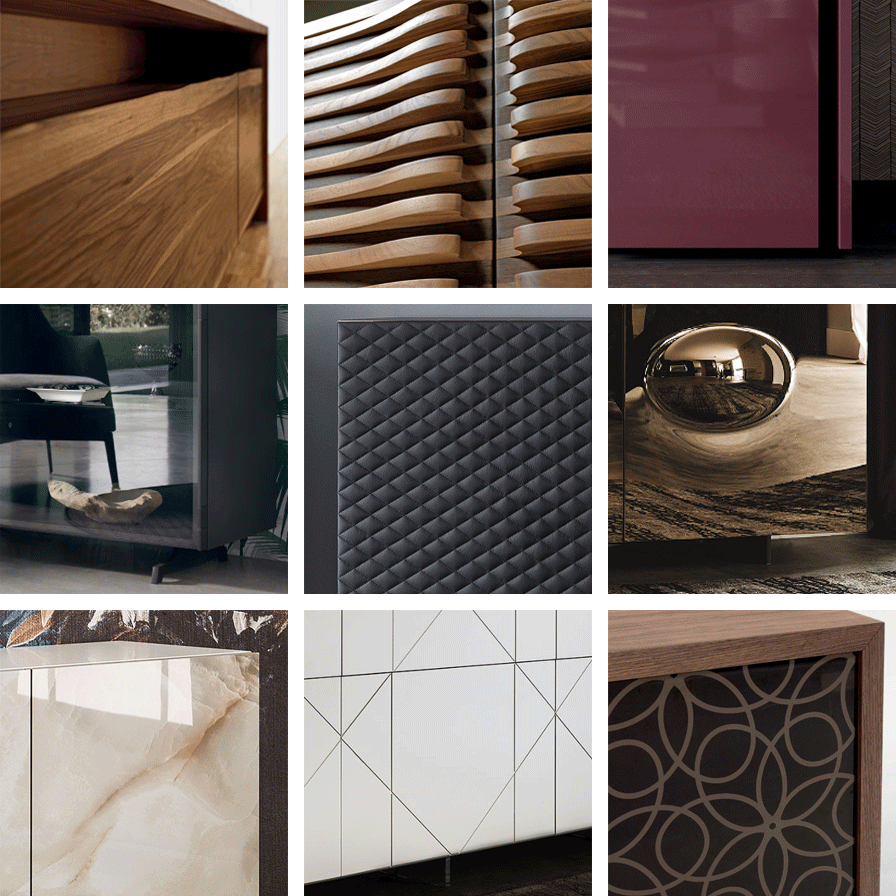
What to put on top of a sideboard or cupboard
We've talked about wall colours, but cupboards and sideboards are also supporting tops for several different items: from a TV to decorative objects, family pictures or your collection of plants or vinyls. Don't forget that a good cupboard or buffet can also be used as a great hallway or entryway furniture.
In this case usually the perfect match is the one between a sideboard and a painting or mirror. Usually we recommend to keep the proportion of the furniture and choose a single painting or a composition of smaller one that have more or less the same width of the sideboard. Painting or mirror, the choice is purely up to your taste. A painting is decorative and emotional, whereas in the living area the mirror is something that decorates but at the same time it can also be used to increase the perception of space, making the room look bigger. On the sides we can find one or more paintings or a full-height mirror, especially if matched together with an hallway sideboard..
On top of a sideboard you can put collectibles, small sculptures or vases. If you like decorative items or bottles of high quality bottles the best way to put them in display is to opt for a cupboard with display case or simply with glass doors.
On top of a lower cabinet you can place dishes and trays when you have guests over for dinner, or use it as a real buffet for an appetizer before seating down for the actual dinner. A living room sideboard is also a great solution for framed pictures and design table lamps, as well as your favourite plants.
If you're into an industrial design style, then you can complete the look with a record player, on the other hand if you're fan of mid-century atmospheres turn your vintage sideboard or cupboard in a bar cabinet. Last recommendation: if mirrors and paintings are not to your taste you can add above some shelving units or floating shelves.



